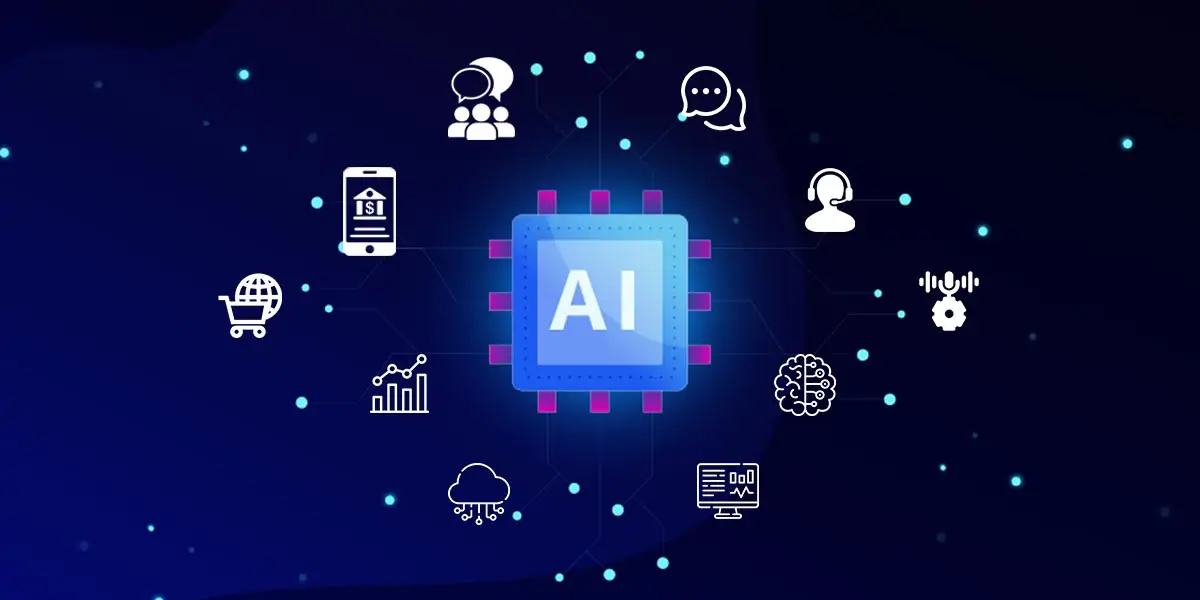In the relentless gold rush of the digital age, Artificial Intelligence (AI) is the new frontier. Businesses across the globe are scrambling to stake their claim, leading to a dizzying proliferation of AI applications and platforms. Yet, a common pitfall plagues many of these ventures: building technologically impressive solutions that solve no real-world problem. They are monuments to innovation, admired for their complexity but ultimately failing to deliver tangible value.
This is where elite AI agencies are changing the game. They operate on a fundamentally different principle: Don’t Guess, Deliver. They understand that the most powerful AI isn’t just about sophisticated algorithms or massive datasets; it’s about deeply understanding the market and using its feedback as the primary blueprint for development. This commitment to a market-led approach is what separates fleeting AI novelties from high-value solutions that become indispensable to clients.
This article delves into the strategic framework that top AI agencies employ. We’ll explore how they’ve moved beyond the “build it and they will come” mentality to a more scientific and sustainable model of value creation. We will uncover the pivotal role of the AI Product Manager, dissect the methods used to transform market feedback into actionable insights, and reveal how the ultimate measure of success is always a tangible business outcome, not just technological prowess.

The New Linchpin: The Rise of the AI Product Manager
At the heart of every successful AI agency is a role that has become arguably the most critical in modern product development: the AI Product Manager (PM). The increasing demand for this specialized talent is no accident. As AI systems become more complex, the chasm between the engineering teams building them and the business clients needing them widens. The AI PM is the essential bridge across this divide, a translator of needs and a navigator of possibilities.
Unlike traditional product managers, the AI PM must possess a unique trifecta of skills: deep technical literacy, sharp business acumen, and a profound understanding of user-centric design. They don’t need to be data scientists, but they must be able to hold intelligent conversations with them, understanding the nuances of machine learning models, data pipelines, and the probabilistic nature of AI outputs.
What makes the AI PM so crucial for leveraging market feedback?
- Translating Market Needs into Technical Specs: A client might say, “We need to reduce customer churn.” A top-tier AI PM translates this vague business goal into a concrete technical problem. They work with the client to understand the underlying drivers of churn, identify the available data points (e.g., customer support interactions, usage patterns, purchase history), and then collaborate with the AI team to determine if a predictive model is the right solution. They frame the problem not as “build an AI,” but as “develop a system that accurately predicts which customers are at high risk of leaving, with at least 90% precision.”
- Championing the User: Market feedback isn’t just about what the C-suite wants; it’s about the end-user’s reality. The AI PM is the ultimate advocate for the user. They conduct interviews, run surveys, and analyze user behavior to understand pain points. For an AI solution to be valuable, it must be usable. An AI-powered sales forecasting tool, for instance, is useless if the sales team finds it too complex or doesn’t trust its recommendations. The PM ensures the final product is intuitive, reliable, and seamlessly integrates into the user’s workflow.
- Managing the ‘Fuzzy’ Nature of AI: AI solutions are not like traditional software. They are often probabilistic, meaning they provide predictions and likelihoods, not certainties. A key part of the AI PM’s job is managing client expectations around this. They use market feedback to define acceptable performance thresholds. For example, in an AI-powered content moderation system, is an 85% accuracy rate acceptable if the false-positive rate is low? The answer lies in understanding the market’s tolerance and the business impact of errors.
By embedding the AI Product Manager at the core of their operations, AI agencies ensure that every development sprint, every line of code, and every model trained is directly tethered to a validated market need. This eliminates guesswork and focuses the entire team on the only thing that matters: building a solution that works in the real world.
From Raw Data to Revenue: AI-Powered Market Research in Action
The phrase “market feedback” can sound abstract, but for leading AI agencies, it’s a concrete and continuous stream of data to be systematically captured and analyzed. These agencies have transformed market research from a static, report-based activity into a dynamic, AI-supercharged engine for insight generation. They leverage the very technology they specialize in to gain an unprecedented understanding of consumer behavior, industry trends, and client pain points.
The transformative potential of AI in market research allows agencies to move beyond what people say and understand what they actually do, think, and feel. This is achieved through a multi-pronged approach.

Key Techniques for AI-Driven Feedback Analysis:
- Sentiment Analysis and Social Listening: Agencies deploy sophisticated Natural Language Processing (NLP) models to scan millions of data points from social media, product reviews, support tickets, and news articles. They can gauge public sentiment towards a brand, a product, or a problem in real-time. For a client in the quick-commerce space, for example, an AI agency could analyze social media chatter to identify the most common complaints—late deliveries, poor product quality, app glitches—and quantify which issues are causing the most significant negative sentiment. This data provides a clear, prioritized list of problems to solve.
- Predictive Behavioral Analytics: By analyzing historical data, AI models can predict future consumer behavior with startling accuracy. An agency working with a struggling multiplex business, as mentioned in the source material, could analyze booking data, customer demographics, and even external factors like streaming service release schedules to predict attendance for upcoming films. This allows the client to optimize showtimes, tailor marketing campaigns, and create targeted promotions, turning data-driven insights directly into revenue.
- Competitive Intelligence Automation: AI tools can continuously monitor the competitive landscape. An agency can track a competitor’s pricing changes, new feature launches, marketing campaigns, and customer reviews. This provides an objective, data-backed view of the market, allowing the agency to advise its clients on how to differentiate their offerings and capitalize on competitor weaknesses.
The beauty of using AI for market research is that it creates a powerful feedback loop. The insights gathered from these methods inform the initial development of the AI solution. Once the solution is deployed, its own usage data becomes a new, rich source of feedback. The AI PM and data science teams can analyze how users are interacting with the tool, where they are succeeding, and where they are struggling. This continuous influx of data allows for rapid iteration and refinement, ensuring the solution evolves in lockstep with user needs.
Beyond the Buzzwords: Proving Value with Tangible Business Outcomes
The ultimate test of an AI solution is not its technical elegance but its impact on the bottom line. The most successful AI agencies understand that their sales pitch cannot be a lecture on neural networks or transformer models. It must be a compelling business case rooted in tangible outcomes and a clear return on investment (ROI). This is the final and most crucial step in the feedback-driven development process: proving that the solution built from market insights actually delivers quantifiable value.
This focus on business outcomes is a direct response to a market saturated with AI hype. Clients have grown wary of expensive, time-consuming “AI experiments” that yield little practical benefit. They demand proof. Elite agencies deliver this proof by making the measurement of success a core part of the project from day one.
How Agencies Demonstrate Tangible ROI:
- Defining Success Metrics Upfront: During the initial discovery phase, the AI PM works with the client to define what success looks like in concrete, measurable terms. These are not vanity metrics; they are key performance indicators (KPIs) that matter to the business. Examples include: a 15% reduction in customer support call volume, a 10% increase in lead conversion rates, a 20% improvement in supply chain efficiency, or a 5% decrease in customer churn.
- Building a Business Case: Before a single line of code is written, the agency presents a clear business case. It outlines the problem (validated by market feedback), the proposed AI solution, the implementation roadmap, and, most importantly, the projected financial impact. This might involve calculating the cost savings from automation, the increased revenue from improved sales forecasting, or the risk mitigation from a more accurate fraud detection system.
- A/B Testing and Pilot Programs: To de-risk the investment for clients, agencies often propose controlled rollouts. They might deploy the AI solution to a small segment of users and measure its performance against a control group that continues with the old workflow. This A/B testing provides undeniable data on the solution’s impact, making the case for a full-scale deployment irrefutable.
- Continuous Reporting and Value Realization: The job isn’t over at launch. Top agencies provide ongoing reporting that tracks the agreed-upon KPIs. They create dashboards that clearly visualize the ROI, showing the client exactly how and where the AI solution is delivering value. This not only justifies the initial investment but also builds a strong, long-term partnership based on trust and proven results.
By shifting the conversation from technological features to business outcomes, AI agencies align themselves completely with their clients’ goals. They use market feedback not just to build a product, but to build a compelling story of value creation, backed by hard data. This is the ultimate fulfillment of the “Don’t Guess, Deliver” philosophy—a commitment to transforming market needs into measurable success.



